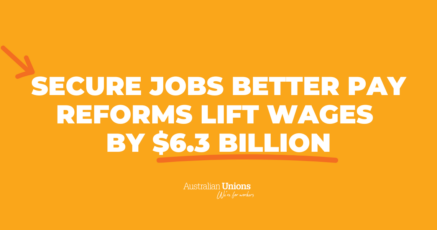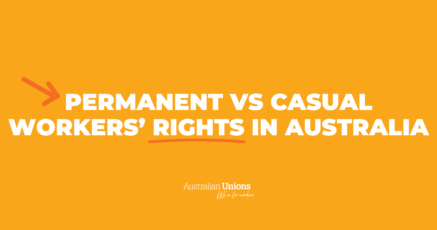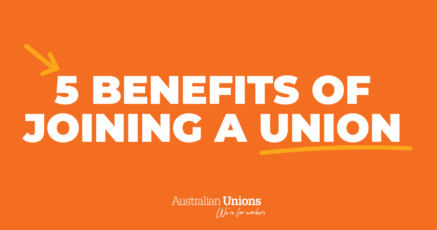If you have been affected by the flood crisis, it’s important to know how to keep yourself and your workmates safe at work, your rights at work, and the government support that may be available to you.
This article will cover the plans to put in place, your leave entitlements, how stand downs work and the Government payments you may be eligible to access.
WHS risks and steps to take
Employers have an obligation to protect workers’ health and safety, and this includes monitoring severe weather risks, conducting risk assessments and putting plans in place for emergency situations.
For flood disasters, plans need to include evacuation protocols and safe clean up arrangements.
In addition to the common risks associated with demolition and clean-up operations like trip and fall hazards, building and structural integrity and falling or sharp objects, flood clean ups pose additional risks like bacterial contamination in water and exposure to sewerage and hazardous chemicals including asbestos.
If the employer has no plans for extreme weather events, Health and Safety Representatives (HSRs) and workers can raise their concerns directly with them.
If workers or HSRs are dissatisfied with the employer response, the HSR can exercise their powers of issuing a Provisional Improvement Notice (PIN) or seek outside assistance from your union or the state or territory’s work safety regulator.
It is important to remember that you have an individual right to cease work if there is an immediate or imminent risk to your safety. Additionally, your HSR has the right to direct work to cease.
If you cease work due to unsafe working conditions, then you need to remember that you must be available to do other suitable duties – if it is safe to do so.
In many circumstances workers will need to leave work to make sure their homes and families are safe. Employers need to have in place plans to enable everyone to do this.
Industrial rights and obligations
Your rights and entitlements in a disaster like the current flood crisis will depend on where you work, what work you do, and how your workplace conditions are set. For the full picture of what you’re entitled to, speak to your union.
Leave entitlements
There is presently no universal form of leave to allow employees to be absent from work due to the impact of a climate disaster. If you are affected by a climate disaster you may be able to access annual leave, long service leave or other leave that is available to you.
You may also be able to apply for personal leave (also known as sick leave/carer’s leave) under the National Employment Standards in some circumstances – for instance where you must provide care or support to an immediate family or household member due to illness or in the event of an unexpected emergency.
Voluntary firefighters and other emergency services volunteers can generally access “Community Service Leave” pursuant to the National Employment Standards (NES).
Community Services leave under the NES is generally unpaid, however your workplace may have an EA or other arrangements which provide for paid leave in these or similar circumstances.
Stand downs
Depending on how the climate disaster affects your workplace and the work that you do, your employer may be able to stand you and other workers down.
Being stood down means that you’re not required to work, and you don’t receive wages. If you’ve been stood down, or you are concerned that you may be, you should contact your union immediately.
Government support during the flood crisis
The Federal Government has payments available in Queensland and New South Wales. Please be aware that these payments may change so check the Services Australia website for the latest updates.
If you are in one of the Local Government Areas (LGAs) which have been declared disaster zones, you can access:
A one-off payment of $1,000 for each eligible adult and $400 for each eligible child. Further details and eligibility criteria can be found here. If you’re in the Richmond Valley, Lismore or the Clarence Valley, you can also access two extra payments (totalling $2,000 for adults and $800 for kids).
To be eligible, you must be seriously affected by the floods through injury, damage to your home, or by being the immediate family member of a person who has died as a direct result of the flood crisis.
If you have lost income due to the floods, payments up to the equivalent of the JobSeeker or Youth Allowance rate are available fortnightly for 13 weeks. Further details and eligibility criteria can be found here.
To be eligible, you must work or live in one of the affected local government areas and earn less than the average Australian weekly income ($1,737.10) in the weeks after you experienced this income loss.
If you live in Queensland, the Queensland State Government has a number of grants you may be eligible to access.
These may be available depending on your circumstances. Check the portal for details and how to apply.
This grant is $180 per person up to $900 for a family of 5 or more for essentials. The grants are only available in affected areas. See site to apply.
There are also specific assistance grants to meet particular costs for Queenslanders.
If you’ve had your essential services out for more than five days (power, gas, water or sewerage) you might be eligible for up to $150 per person (up to $750 for a family). Further details can be found here.
These provide up to $4,200 towards repair work and $200 towards a safety inspection. Further details can be found here.
If you’re not insured and on a low income, you can get up to $1,765 for single adults or $5,300 for couples/families for essential household contents (like beds, linen, whitegoods). Further details can be found here.
This grant is to help with repairs to make your home secure, worth up to almost $11,000 for single adults or just under $15,000 for couples/families towards home repairs. Further details can be found here.
Have any questions?
Contact our Support Centre on 1300 486 466







SHARE:
Keeping safe: your rights at work and support during the flood crisis